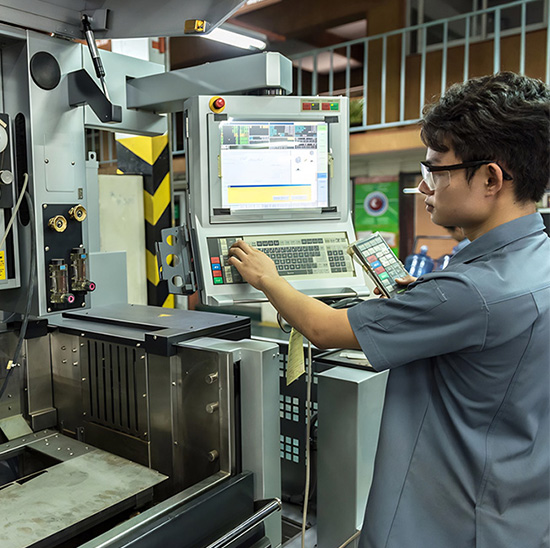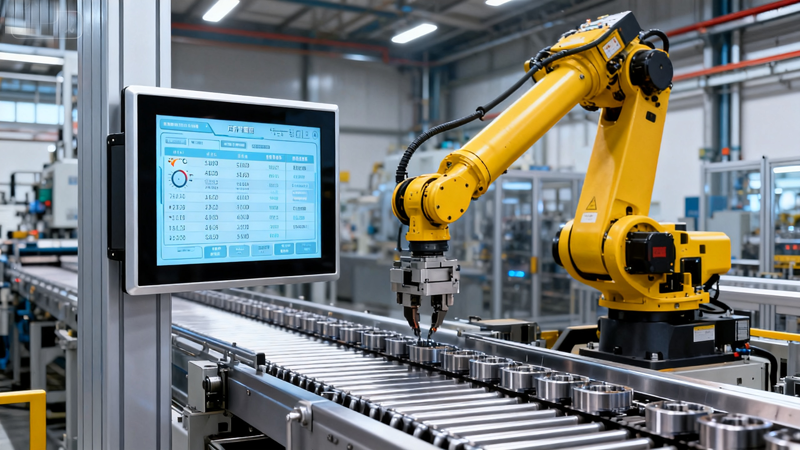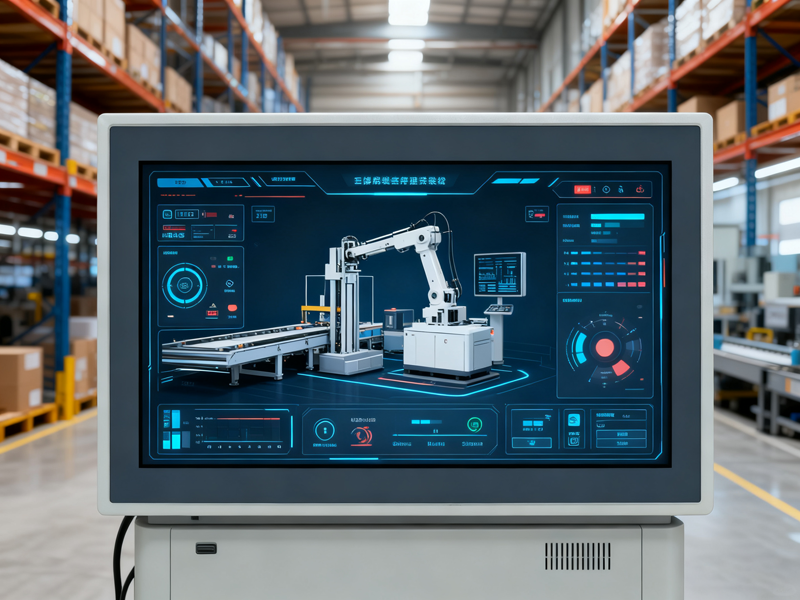Dans les véhicules électriques (Véhicules électriques), Le panneau de commande n'est pas seulement un «tableau de bord» - c'est le centre de commande pour chaque fonction critique, de la charge de batterie au freinage régénératif, Et l'écran tactile EV Control est son composant le plus vital. Contrairement aux voitures à gaz traditionnelles (où les boutons physiques gèrent la plupart des contrôles), EVs rely on intuitive touch screens to streamline complex operations: monitoring charge levels, adjusting climate settings without draining battery life, or even preheating the cabin before a drive. A well-designed EV Control Touch Screen turns overwhelming data into actionable insights, while a poorly executed one can lead to frustration, distracted driving, or even inefficient battery use. This guide will break down what makes an EV Control Touch Screen effective, how to evaluate its performance, and why it’s a non-negotiable part of modern EV design—helping you understand its value whether you’re an EV manufacturer or a consumer.

Core Functions of an EV Control Touch Screen
An EV Control Touch Screen does more than just display information—it’s integrated with the vehicle’s electrical systems to manage key operations. Here are its must-have functions:
1. Battery Management and Charging Controls
Le #1 priority for EV drivers is battery health and range, so the touch screen must excel here:
Real-time battery monitoring: Clearly show state of charge (SoC, par exemple., 75%), remaining range (adjusted for driving conditions like speed or climate use), and energy consumption (kWh/100km).
Charging controls: Let users start/stop charging, set charging schedules (par exemple., charge only during off-peak hours for lower electricity costs), and select charging speed (slow vs. fast DC charging).
Battery health insights: Display data like charging cycle count or temperature (critical for maintaining long-term battery life—overheating can reduce capacity).
2. Vehicle and Climate Control
EVs need efficient climate systems (since heating/cooling drains battery), and the touch screen streamlines this:
Smart climate settings: Adjust temperature, fan speed, or seat heating/cooling—with pre-conditioning options (par exemple., heat the cabin while the car is still plugged in, so battery isn’t used for warming).
Regenerative braking adjustment: Let drivers tweak regenerative braking strength (par exemple., “low” for smooth coasting, “high” to recapture more energy) via l'écran tactile, improving range and driving comfort.
Driver assistance controls: Integrate with EV-specific features like adaptive cruise control (with range-aware speed limits) or lane-keeping assist—all accessible via the touch screen.
3. Connectivity and User Customization
Modern EV drivers expect seamless connectivity, and the touch screen delivers:
Smartphone integration: Support for Apple CarPlay/Android Auto, plus EV-specific apps (par exemple., Tesla’s app for remote charging, or FordPass for range tracking).
User profiles: Save personalized settings (seat position, climate preferences, favorite charging stations) for multiple drivers—so the touch screen adjusts automatically when someone logs in.
En direct (OTA) mises à jour: Receive software updates via the touch screen (no need to visit a dealership) to add new features (par exemple., improved battery algorithms) or fix bugs.
Key Criteria for Evaluating an EV Control Touch Screen
Not all EV Control Touch Screens are equal—these factors separate high-performance models from subpar ones:
1. Responsiveness and Safety (No Distractions)
EV drivers can’t afford lag when adjusting critical controls, so:
Latence: Aim for <80ms response time—any delay (par exemple., waiting for the climate menu to load) increases distracted driving risk.
Physical shortcuts: Look for hard buttons or haptic feedback (vibrations when tapping) for core functions like emergency brakes or climate on/off—so drivers don’t have to stare at the screen to confirm inputs.
Sunlight readability: Use anti-glare coatings and high brightness (600+ nits) to ensure the screen is visible in direct sun—no squinting to check battery range.
2. Durability and Battery Efficiency
EVs have unique environmental and power needs, so the touch screen must adapt:
Temperature resistance: Operate reliably in -20°C to 70°C (EV cabins can get hot in summer or cold in winter) without lag or screen failure.
Basse consommation énergétique: The touch screen should use <5W of power (contre. 10W+ for standard car screens) to avoid draining the battery—critical for maximizing range.
Imperméabilisation: IP65 or higher rating to withstand spills (par exemple., a water bottle tipping) or humidity, since EVs often have sealed cabins.
3. Integration with EV Systems
The touch screen must work seamlessly with the EV’s electrical architecture:
Battery data accuracy: Ensure the screen displays real-time SoC and range that matches the vehicle’s actual performance (no “range anxiety” from inaccurate readings).
Charging compatibility: Support all charging standards (CCS, CHAdeMO, Level 2) so the screen can communicate with any charging station—no errors when plugging in.
Safety certifications: Meet automotive safety standards (par exemple., ISO 26262 for functional safety) to prevent malfunctions that could affect battery or vehicle controls.
FAQs About EV Control Touch Screens
T1: What happens if the EV Control Touch Screen freezes while driving?
A1: All reputable EVs have backup systems—physical buttons for critical functions (par exemple., climate, brakes) and a “reset” option (hold the power button for 10 secondes) to restart the screen. Most also include OTA updates to fix freezing issues long-term.
T2: Does a larger EV Control Touch Screen use more battery?
A2: Not necessarily—modern screens use energy-efficient OLED or LCD panels. A 15-inch screen with low-power tech may use the same energy as a 10-inch screen with older components. Always check the screen’s power consumption specs.
T3: Can I replace an older EV Control Touch Screen with a newer model?
A3: It depends on the EV’s make/model. Some manufacturers (par exemple., Tesla, Volkswagen) allow retrofits via dealerships, while others (with proprietary systems) may not support replacements. Check with your EV manufacturer or a certified technician first.
T4: How often should I update the EV Control Touch Screen’s software?
A4: Install OTA updates as soon as they’re available—most manufacturers release 2–4 updates per year to improve battery efficiency, add features, or fix security issues. The touch screen will notify you when an update is ready.
The EV Control Touch Screen is the heart of an electric vehicle—connecting drivers to their battery, controls, and connectivity, while directly impacting range, sécurité, and overall experience. Whether you’re designing an EV or choosing one, prioritizing responsiveness, battery efficiency, and seamless integration will ensure you get the most out of your electric driving journey.
If you’re an EV manufacturer looking for a high-performance EV Control Touch Screen (par exemple., need custom integration with battery systems, or want to optimize power consumption) or a consumer with questions about upgrading your current screen, Remplissez le formulaire sur notre site Web. Our EV tech experts will analyze your needs (vehicle model, use case, budget) to recommend a tailored solution—helping you build or enjoy a more efficient, user-friendly electric vehicle.



